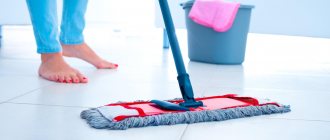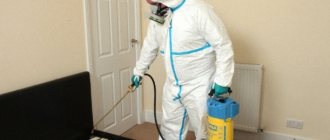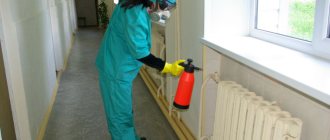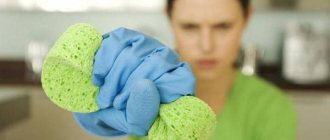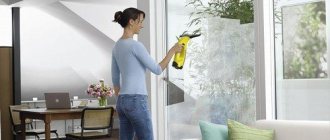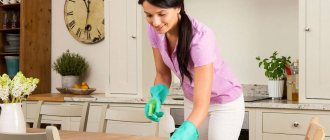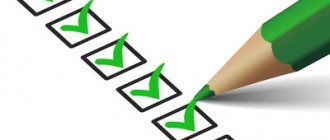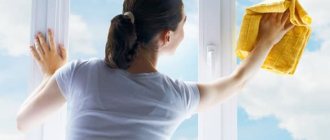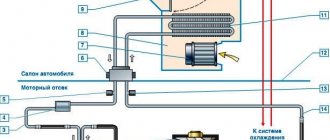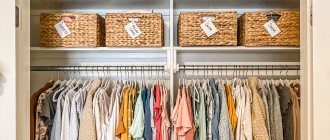Excerpts from SanPiN 1079-01
For cleaning production, warehouse, auxiliary premises, as well as toilets, separate equipment is allocated, which is stored in specially designated areas, as close as possible to the cleaning areas. Toilet cleaning equipment is marked with a signal color and is stored separately.
Special personnel are assigned to clean toilets.
Cleaners must be provided with sufficient cleaning equipment, rags, detergents and disinfectants.
Excerpts from SanPiN 2821-10
Toilets, dining rooms, lobbies, and recreation areas are subject to wet cleaning after each break.
Daily cleaning of toilets, showers, buffets, and medical premises is carried out using disinfectants, regardless of the epidemiological situation. Sanitary equipment must be disinfected daily. Handles of flush tanks and door handles are washed with warm water and soap. Sinks, toilets, toilet seats are cleaned with brushes or brushes, cleaning agents and disinfectants permitted in accordance with the established procedure.
Cleaning equipment for cleaning sanitary facilities (buckets, basins, mops, rags) must have a signal marking (red), be used for its intended purpose and stored separately from other cleaning equipment.
Excerpts from GOST R 51870—2014
3.2 Toilets, showers, sanitary inspection rooms
3.2.1 Daily:
— wet floor cleaning;
— washing and disinfection of all sinks, toilets, etc., both inside and outside;
— washing seats on both sides; — emptying and cleaning (if necessary) containers for collecting paper, removing waste to specially designated areas;
— cleaning and polishing of mirrors and metal surfaces; — complete with paper towels, soap, toilet paper;
— removing stains from walls, partitions, doors and external surfaces of all containers; — cleaning of all pipes and shut-off valves;
— removing soap and water stains from wall surfaces near soap containers, sinks, toilets, etc.;
- wet wipe of drainage grates
Registration requirements
The document is drawn up in accordance with sanitary and epidemiological rules and regulations (SanPiN) for organizations and contains the following information:
- Current date.
- Cleaning time.
- Full name of the responsible executor.
- Information about the controller.
The schedule is posted on the wall. After each cleaning and inspection, the personal signatures of the responsible and inspecting person are placed in the fields specially designated for this. The completed document is stored in the archive for a period established by the organization, after which it is disposed of.
In terms of timing, the schedule can be drawn up for:
- day,
- month,
- quarter,
- half a year or a year.
To create the necessary document, you can use a ready-made sample, an online designer, or seek help from professionals.
Why is there no universal document? Cleaning of bathrooms in different institutions can vary significantly:
- quantity,
- frequency,
- duration of treatments,
- requirements for disinfectant solutions and their preparation time.
How to make such a schedule
There is no legally prescribed form for such a document. The employer can draw it up in free form.
What needs to be included in the toilet cleaning schedule (we take a sample for one day):
- Company name.
- Positions and names of workers who are appointed responsible for monitoring the cleaning of the toilet.
- Date.
Next, you need to insert a table with the following columns:
- Cleaning time.
- Signature of the employee who carried out the cleaning.
- Controller's signature.
For your information! If the quality of cleaning does not meet the requirements, the inspector has the right to request that the procedure be repeated.
Schools
According to SanPiN 2.4.2.2821-10, bathrooms in educational institutions are wet treated with disinfectants after each break, and plumbing fixtures are disinfected every day.
To clean components, use a warm soapy solution ; to clean sinks and toilets, brushes and brushes and products approved by the protocol are used.
Inventory is processed, marked and stored in strict accordance with the document. The responsible person is the director of the school or lyceum.
Inventory
Storage of equipment
There are requirements for equipment and detergents that can be used during cleaning. They must be safe and effective. And the employee must have a uniform.
Rules for the selection and storage of equipment and disinfectants:
- cleaning equipment should not be stored in the school toilet, but in a special storage room;
- containers and other accessories should be marked in different colors depending on the room for which they are used;
- buckets must be signed so as not to be confused;
- It is allowed to use only equipment that is subject to disinfection;
- after each use, rags, rags and other devices are disinfected;
- chloramine solution, Samarovka, Clorosept are used as disinfectants. Devices are treated in each disinfectant liquid for at least an hour;
- Rags for floors and walls in the toilet room should be separate.
You cannot wash the gym and the bathroom with the same rags, or use the same equipment. It is recommended to have a separate disinfectant solution.
Before cleaning, the employee must prepare. The work uses gloves, an apron, and a long-sleeved uniform. Disinfectants should not damage the skin. It is not recommended to hire people with sensitive skin.
Important! To ensure proper order in the school, you need to have an industrial vacuum cleaner.
Catering enterprises
Since we are talking about the health of visitors, supervisory authorities require strict compliance with the rules from owners of cafes, restaurants and canteens. The cleanliness of the bathroom is considered an indicator of the overall sanitary and hygienic level.
It is necessary to carry out daily disinfection , and treat plumbing fixtures with hydrochloric acid every three days. Daily, periodic and general cleaning schedules are drawn up.
Large catering establishments prefer to contact cleaning companies to improve the quality of cleaning and comply with all regulatory requirements.
Treatment of premises during coronavirus at the enterprise
If employees have not been transferred to remote work, then they simply need to ensure maximum safety.
The cleaning of premises against coronavirus is the responsibility of cleaners of industrial premises. They maintain cleanliness and order in accordance with the requirements of the employer. To do this, they use different tools, equipment, and chemicals that help clean the premises and disinfect and disinfect them.
Particular attention is paid to public places: toilets, gyms, eating areas and rest rooms. Disinfection in such rooms should be carried out every two hours.
Cleaners thoroughly wipe down walls, floors, work surfaces, door handles, tables and chairs, and all equipment using disinfectants. Then the premises must be ventilated for 15-20 minutes. This regime helps prevent the spread of coronavirus and ensure safety for all workers
Disinfection in such rooms must be carried out every two hours. Cleaners thoroughly wipe down walls, floors, work surfaces, door handles, tables and chairs, and all equipment using disinfectants. Then the premises must be ventilated for 15-20 minutes. This regime helps prevent the spread of coronavirus and ensure safety for all workers.
Disinfection of office premises should be carried out twice a day. But if infected people are identified at work or those who have previously been in contact with sick people, cleaning is carried out every two hours.
Do I need to create a schedule for sanitizing surfaces during Covid?
To prevent the spread of coronavirus within the organization, a special schedule is drawn up for treating surfaces in office premises. This is an important document to follow. It allows you to maximally protect employees at the enterprise and prevent the spread of the virus.
After all, employee safety is the most important criterion during the Covid pandemic.
Compilation rules
A schedule for sanitizing surfaces is drawn up in any form. This document is necessary for employees who are responsible for carrying out these events.
A schedule is drawn up on an A4 sheet, which indicates the initials and position of the responsible person, as well as the name of the premises.
There must also be a signature of the person who carries out this processing and the signature of the person who monitored all these activities. This schedule allows the cleaner to know when to clean the area next.
The disinfectants used are safe for employees. Therefore, sanitary treatment of surfaces can be carried out in the presence of personnel. This is very convenient, because specialists can not stop working while carrying out these preventive measures.
The results of the sanitation carried out are recorded in a special journal for recording surface treatment for Covid-19.
Disinfection norms and rules
There are general rules and regulations that apply to the cleaner, the process itself and the equipment used to carry it out. Performing employees must be specially trained, have personal protective equipment and use only certified disinfectants.
Universal instructions for daily cleaning of the bathroom:
- Take out the trash.
- Replace consumables as necessary.
- Clean vertical and horizontal surfaces from dirt.
- Disinfect them.
- Treat the plumbing.
- Wash the floor.
To carry out the work, the following equipment is required:
- napkins, sponges, hand brushes;
- tools for dry and wet floor cleaning;
- containers for water and solutions;
- detergents and disinfectants for household chemicals;
- individual protection means.
Cleaning equipment is marked red to avoid its use in other areas.
Instructions for cleaning bathrooms
Aseptic procedure for cleaning the toilet
Cleaning the toilet should be carried out according to the established algorithm. This helps to achieve maximum cleanliness in the room. The process is described and approved in detail.
Instructions for cleaning the toilet at school:
- Prepare cleaning supplies and necessary equipment.
- Disinfect your hands and prepare your clothes.
- Put up a sign warning about wet fields.
- Turn on the light and empty the trash bin. Drain the water from the barrel. Remove water from the toilet using a brush. Check that the unit is not clogged.
- Apply disinfectant to edges and rim. Leave for a while.
- Wipe surfaces with a dampened cloth, including mirrors, soap dishes, and dispensers.
- Clean the walls from dirt at least 1 meter from the floor.
- Wipe down switches and door handles.
- Wash the sink, faucet and other parts.
- Wipe the tank, toilet seat, and outer surface with a disinfectant. Repeat with a dry cloth.
- Pour the disinfectant into the brush container and place it there.
- Clean the trash container.
- Ventilate the room.
- Treat the door handle when exiting.
- Disinfect equipment that was used and dry it.
- Wash the hands.
Important! If the disinfectant must be washed off, the cleaner must additionally treat the surfaces with a clean napkin.
In a school or kindergarten, you need to keep the premises clean. It is important to pay special attention to bathrooms. There is a risk of infection in this place, just like in a clinic or other medical facility.
Adviсe
Compliance with the drawn up and certified schedule must be constantly monitored. The human factor is the most unreliable. Rospotrebnadzor inspection statistics state that the most common violations in organizations are:
- Toilets are not cleaned or disinfected (73% of cases).
- Information about them is not recorded in the corresponding journal.
- There is no schedule or registration for preparing the disinfection solution.
- There is no certificate for disinfectants (33%).
- Toilet cleaning supplies are stored and labeled incorrectly (13%).
An administrative fine damages the budget and affects the reputation of the person responsible and the institution itself.
All the most important and useful information on cleaning the toilet is presented in this section.
Download! Restroom Cleaning Schedule: Sample Form
To enlarge the picture, click on it
To enlarge the picture, click on it
To enlarge the picture, click on it
To enlarge the picture, click on it
To enlarge the picture, click on it
Equipment and detergents, a set of workwear
According to sanitary standards, a room of this type must be cleaned in special clothing designed for this purpose. Following the rules will avoid contact with germs. The use of casual or formal clothing is also excluded, as detergents can get on the fabric and ruin it. At home, it is worth highlighting a special form of convenient things used specifically for cleaning.
Availability is important:
- brush;
- cleaning gloves;
- rags;
- sponges;
- brushes;
- mops;
- buckets.
You also need to purchase in advance all the necessary tools that will help you quickly complete the task. Be sure to have glass spray. It is better to choose a proven product that does not leave streaks. You also need a gel for cleaning the toilet and other plumbing items. They usually have a composition that does an excellent job of killing bacteria. In addition, they must cope with limescale and rust, which will improve the appearance of the plumbing.
We recommend:
Turbo brush for vacuum cleaner
spring-cleaning
General cleaning in 2022 is carried out in accordance with the new SanPiN 2.1.3678-20. This is the main document fixing the requirements for the sanitary maintenance of premises.
General cleaning is carried out:
- Only with certified chemicals and technical means. The use of other household products not included in the list of permitted products is prohibited.
- In strict order. Third parties are not allowed to clean. Sanitary measures can only be carried out by employees of the organization who have undergone safety training. Exception: a company may hire a specialized cleaning service.
Algorithm of actions for general cleaning according to SanPiN in 2022:
- Initial inspection of premises. Purpose: detection of damage and heavy contamination on surfaces. Preparing equipment for cleaning.
- Washing contaminated surfaces.
- Applying a disinfectant solution.
- Exposition.
- Change of overalls.
- Washing.
- Quartz treatment and ventilation.
- Disinfection of cleaning equipment.
How often and what to wash in the office
Disinfection of office premises is:
- a preventive measure not only against coronavirus, but also during epidemics of influenza and ARVI;
- a complete method of getting rid of pathogenic viruses and bacteria.
According to the recommendations of Rospotrebnadzor, employers disinfect and clean office premises to prevent the spread of coronavirus infection. The requirements are established in letters from the department. They are different for organizations that are operating and have temporarily suspended their activities (or whose employees have switched to remote work). The latter carried out disinfection before closing offices and switching to self-isolation.
Not only operating organizations are recommended to carry out processing, but also those that have temporarily suspended their activities. Recommendations from Rospotrebnadzor on how to disinfect an office where work has been suspended or employees have been transferred to remote work:
- on your own or with the involvement of specialists and cleaning companies;
- periodic treatment of frequently used surfaces with disinfectants;
- use of certified products based on chloroactive and oxygen-active compounds, cationic surfactants;
- preliminary preparation of solutions in accordance with the instructions;
- the use of wiping and irrigation methods for horizontal and vertical surfaces, the processing of tools and utensils is carried out by immersion;
- periodic ventilation of premises;
- carry out work with gloves;
- comply with safety requirements.
The approved instructions for disinfecting office premises against coronavirus are annex to the letter of the Federal Service for Surveillance on Consumer Rights Protection and Human Welfare dated March 27, 2020 No. 02/5210-2020-24.
NPA
Letter of Rospotrebnadzor dated March 27, 2020 No. 02/5210-2020-24 “On carrying out disinfection measures in office premises” The letter contains instructions on the procedure for carrying out disinfection measures in order to prevent a new coronavirus infection in the office premises of organizations that have temporarily suspended operations or whose employees have transferred for remote work. Letter of Rospotrebnadzor dated March 10, 2020 No. 02/3853-2020-27 “On measures to prevent the new coronavirus infection (COVID-19)” (together with “Recommendations for the prevention of the new coronavirus infection (COVID-19) among workers”) High-quality cleaning is recommended premises using virucidal disinfectants, special attention is paid to the disinfection of door handles, switches, handrails, railings, contact surfaces (worker tables and chairs, office equipment), common areas (eating rooms, rest rooms, toilet rooms, rooms and equipment for classes sports, etc.), in all rooms with a frequency of treatment - every 2 hours. Please note that regular and frequent disinfection of organizations is not a prescribed measure, but a recommended one
Let's list why they should be followed if your office is open during a pandemic:
Please note that regular and frequent disinfection of organizations is not a prescribed measure, but a recommended one. Let's list why they should be followed if your office is open during a pandemic:
- it's about people's safety;
- COVID-19 is transmitted by airborne droplets (main route);
- the spread of infection as a result of the actions or inaction of organizations and officials is punishable by large fines.
Why is it necessary to wet clean classrooms daily?
Regular wet cleaning should be done daily, but there is no need to use detergents every time. This is especially true for those who have small children or pets in the house. The advantages of wet cleaning are: The ability to get rid of pathogens in the most cost-effective way.
Interesting materials:
How can an individual obtain a TIN for the first time? How to charge a lithium polymer battery for the first time? How is vacation pay paid by law? How is sick leave paid? How is the northern supplement paid? How does the placenta protect the baby? How to transfer video via Bluetooth? What is another name for the prime meridian? What is another name for Panama? What is another name for marigolds?
What is SanPiN?
SanPiN are rules developed based on the requirements for human safety and well-being, taking into account the environment. They were created to preserve and protect public health.
These rules are reflected in regulatory by-laws. They are subject to registration with the Ministry of Justice and signed by the Chief Sanitary Doctor of the Russian Federation. Activities to supervise the implementation of sanitary standards are carried out by Rospotrebnadzor.
Sanitary standards apply throughout the Russian Federation and apply to all citizens.
Recently, a number of cleaning requirements according to SanPiN have been changed. The following were signed:
- Resolution of the Chief State Sanitary Doctor of the Russian Federation “SanPiN 2.1.3684-21”.
- Resolution of the Chief State Sanitary Doctor of the Russian Federation “SanPiN 1.2.3685-21”.
The main innovation: the criteria for cleaning premises and adjacent areas have changed. In 2022, the requirements for the frequency of sanitary cleaning measures according to SanPiN have been tightened.
The new SanPiN for cleaning 2022 can be downloaded here: SanPiN 2.1.3684-21; SanPiN 1.2.3685-21.
SanPiN 2.4.2.2821-10 - sanitary standards for bathrooms in educational institutions
Points from SanPiN 2.4.2.2821-10 concerning standards for toilets in schools and other educational institutions for children.
Sanitary and epidemiological rules and regulations SanPiN 2.4.2.2821-10 “Sanitary and epidemiological requirements for the conditions and organization of training in general education organizations”
IV. Building requirements
4.7. In the educational sections (blocks) for students in grades 1 - 4 there are: educational premises with recreation, playrooms for extended-day groups (at the rate of at least 2.5 m2 per student), toilets .
4.14. Gyms in existing educational institutions should be equipped with equipment; changing rooms for boys and girls. It is recommended to equip gyms with separate showers and toilets .
4.15. In newly constructed buildings of educational institutions, gyms should be equipped with : equipment; premises for storing cleaning equipment and preparing disinfectant and cleaning solutions with an area of at least 4.0 m2; separate dressing rooms for boys and girls with an area of at least 14.0 m2 each; separate showers for boys and girls with an area of at least 12 m2 each; separate toilets for boys and girls with an area of at least 8.0 m2 each . Hand washing sinks will be installed in toilets or locker rooms .
4.22. For newly constructed and reconstructed buildings of general education institutions, the following premises for medical care must be equipped : a doctor’s office with a length of at least 7.0 m (to determine the hearing and visual acuity of students) with an area of at least 21.0 m2; treatment and vaccination rooms with an area of at least 14.0 m2 each; a room for preparing disinfectant solutions and storing cleaning equipment intended for medical premises, with an area of at least 4.0 m2; toilet .
4.25. Toilets for boys and girls, equipped with stalls with doors, should be located on each floor. The number of sanitary fixtures is determined at the rate of: 1 toilet for 20 girls, 1 washbasin for 30 girls: 1 toilet, 1 urinal and 1 washbasin for 30 boys. The area of sanitary facilities for boys and girls should be taken at a rate of at least 0.1 m2 per student.
A separate bathroom is allocated for staff at the rate of 1 toilet per 20 people.
In previously constructed buildings of general education institutions, the number of sanitary units and sanitary fixtures is allowed in accordance with the design solution.
Pedal buckets and toilet paper holders are installed in sanitary facilities; An electric towel or paper towel holder is placed next to the washbasins. Sanitary equipment must be in good working order, without chips, cracks or other defects. Entrances to bathrooms are not allowed to be located opposite the entrance to classrooms.
Toilets are equipped with seats made of materials that can be treated with detergents and disinfectants.
For students of the II and III levels of education in newly constructed and reconstructed buildings of educational institutions, personal hygiene rooms are provided at the rate of 1 cubicle per 70 people with an area of at least 3.0 m2. They are equipped with a bidet or a tray with a flexible hose, a toilet and a washbasin with cold and hot water supply.
For previously constructed buildings of educational institutions, it is recommended to install personal hygiene cabins in the toilet rooms.
4.27. Washbasins are installed in primary classrooms, laboratory rooms, classrooms (chemistry, physics, drawing, biology), workshops, home economics classrooms, and in all medical premises.
The installation of sinks in classrooms should be provided, taking into account the height and age characteristics of students: at a height of 0.5 m from the floor to the side of the sink for students in grades 1 - 4 and at a height of 0.7 - 0.8 m from the floor to the side of the sink for students from grades 5 to 11. Pedal buckets and toilet paper holders are installed near the sinks. Electric or paper towels and soap are placed next to the washbasins. Soap, toilet paper and towels must be available at all times.
4.29. It is recommended to lay the floors of toilets and washrooms with ceramic tiles.
4.33. The structure of a general education institution as a structural unit may include a boarding school at a general education institution, if the general education institution is located above the maximum permissible transport service.
The building of a boarding school at a general education institution can be separate, as well as be part of the main building of a general education institution, separating it into an independent block with a separate entrance.
The premises of a boarding school at a general education institution must include::
— washrooms (1 sink for 10 people), toilets (1 toilet for 10 girls, 1 toilet and 1 urinal for 20 boys, each toilet has 1 sink for washing hands), showers (1 shower net for 20 people), hygiene room . Pedal buckets and toilet paper holders are installed in toilets; Electric or paper towels and soap are placed next to the washbasins. Soap, toilet paper and towels must be available at all times;
VII. Requirements for natural and artificial lighting
7.1. Daylight.
7.1.2. Without natural lighting, it is allowed to design : squat rooms, washrooms, showers, toilets in the gymnasium; showers and toilets for staff ; storerooms and warehouses, radio centers; film and photo laboratories; book depositories; boiler rooms, pumping water supply and sewerage systems; ventilation and air conditioning chambers; control units and other premises for installation and management of engineering and technological equipment of buildings; premises for storing disinfectants.
VIII. Requirements for water supply and sewerage
8.1. Buildings of educational institutions must be equipped with centralized systems of domestic and drinking water supply, sewerage and drains in accordance with the requirements for public buildings and structures in terms of domestic and drinking water supply and sanitation.
Cold and hot centralized water supply is provided to the premises of a general education institution, preschool education and boarding school at a general education institution, including: food service premises, a dining room, pantry rooms, showers, washrooms, personal hygiene cabins, medical premises, labor training workshops, home economics rooms, primary care premises classrooms, drawing, physics, chemistry and biology classrooms, laboratory rooms, rooms for processing cleaning equipment and toilets in newly built and reconstructed educational institutions .
8.2. If there is no centralized water supply in the locality in existing buildings of general education institutions, it is necessary to ensure a continuous supply of cold water to the catering facilities, medical premises, toilets , boarding rooms at a general education institution and preschool education and the installation of water heating systems.
8.3. General educational institutions provide water that meets the hygienic requirements for the quality and safety of drinking water supply.
8.4. In buildings of general education institutions, the canteen sewerage system must be separate from the rest and have an independent outlet into the external sewerage system. The sewage system risers from the upper floors should not pass through the industrial premises of the canteen.
8.5. In non-sewered rural areas, buildings of educational institutions are equipped with internal sewerage (such as backdoor closets), subject to the installation of local treatment facilities. The installation of outdoor toilets is permitted.
XII. Requirements for sanitary maintenance of territory and premises
12.3. All premises of educational institutions are subject to daily wet cleaning using detergents.
Toilets , dining rooms, lobbies, and recreation areas are subject to wet cleaning after each break.
Cleaning of educational and auxiliary premises is carried out after the end of lessons, in the absence of students, with windows or transoms open. If a general education institution operates in two shifts, cleaning is carried out at the end of each shift: floors are washed, places where dust accumulates are wiped (window sills, radiators, etc.).
The premises of a boarding school at a general education institution are cleaned at least once a day.
To carry out cleaning and disinfection in a general educational institution and a boarding school at a general educational institution, use detergents and disinfectants that are approved in accordance with the established procedure for use in children's institutions, following the instructions for their use.
Disinfectant solutions for cleaning floors are prepared before direct use in restrooms in the absence of students.
12.7. In the sleeping quarters of a general educational institution and a boarding school at a general educational institution, bedding (mattresses, pillows, blankets) should be ventilated directly in the bedrooms with the windows open during each general cleaning. Bed linen and towels are changed when dirty, but at least once a week.
Before the start of the school year, bedding is treated in a disinfection chamber.
In toilet areas, soap, toilet paper and towels must be available at all times.
12.8. Daily cleaning of toilets , showers, buffets, and medical premises is carried out using disinfectants, regardless of the epidemiological situation. Sanitary equipment must be disinfected daily. Handles of flush tanks and door handles are washed with warm water and soap. Sinks, toilets, toilet seats are cleaned with brushes or brushes, cleaning agents and disinfectants permitted in accordance with the established procedure.
12.17. When synanthropic insects and rodents appear in an institution on the territory of a general educational institution and in all premises, it is necessary to carry out disinsection and deratization by specialized organizations in accordance with regulatory and methodological documents.
In order to prevent the breeding of flies and destroy them during the development phase, once every 5-10 days, outhouse toilets are treated with approved disinfectants in accordance with regulatory and methodological documents for the control of flies.
Periodicity
The frequency of cleaning according to SanPiN in 2022 is determined by the following by-laws:
- Resolution of the Chief State Sanitary Doctor of the Russian Federation dated December 24, 2020 No. 44 “On approval of sanitary rules SP 2.1.3678-20”;
- SaNPiN 2.1.3684-21.
Unless otherwise established by the specified documents or other clarifying acts (instructions, recommendations), the frequency of cleaning activities is carried out in the following order:
- Common premises (offices, canteens) used to provide public services to citizens of the Russian Federation (schools, clinics, hospitals, dental clinics, etc.), as well as apartment buildings, are subject to daily wet cleaning.
- Specialized rooms at increased risk of increasing the population of microorganisms and the likelihood of infection (procedure rooms, operating rooms) twice a day. Additionally, the room is cleaned after procedures requiring disinfection of surfaces and air.
- Bathrooms are cleaned daily according to a schedule. The schedule is approved and monitored daily.
Dry cleaning of premises is prohibited according to the new SanPiN rules. Therefore, the frequency of its use is not taken into account when drawing up a general plan of sanitary measures in a particular institution.
